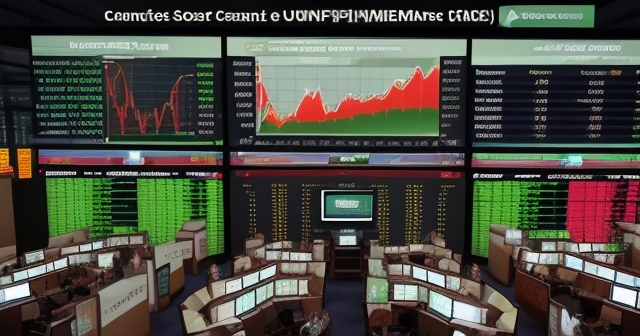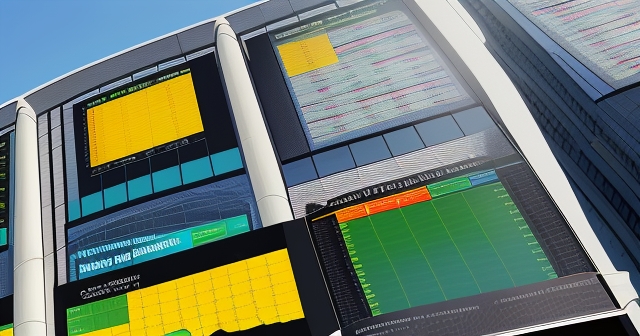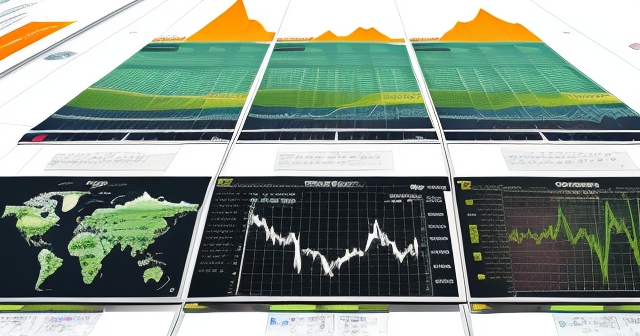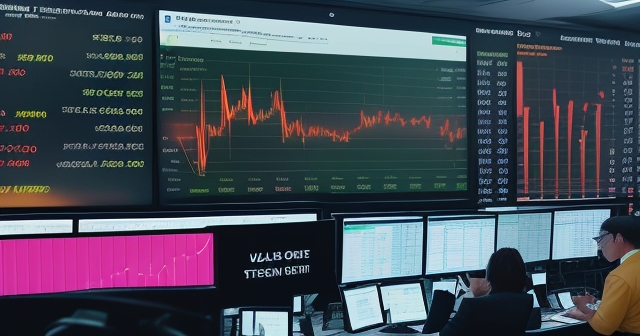Understanding Suncorp Group (ASX: SUN) Share Trading: A Deep Dive for Investors
Welcome, astute investors, to a comprehensive exploration of Suncorp Group (ASX: SUN) and the dynamics surrounding its suncorp share trade activities. If you’re navigating the world of Australian equities, understanding key players like Suncorp is crucial. We’re here to guide you, step by step, through the complexities of this prominent financial institution, blending essential market knowledge with actionable insights.
Investing involves more than just buying and selling shares; it requires comprehending the company’s strategic direction, financial health, and how these factors influence its presence on the Australian Securities Exchange (ASX). Suncorp Group, a significant entity within the ASX Top 50, offers a fascinating case study in corporate evolution, shareholder value, and market perception. Let’s embark on this journey to decode what drives the value of Suncorp shares.
To help you better understand the key details of Suncorp Group, consider the following points:
- Suncorp focuses on the insurance sector and has divested its banking operations.
- The group operates within the ASX Top 50, highlighting its significance in the Australian market.
- Investors should consider both financial metrics and company strategies in their analysis.

Suncorp’s Strategic Compass: Navigating Major Divestments
Every major corporation periodically evaluates its portfolio of businesses, seeking to optimize performance and focus on core strengths. Suncorp Group has recently been on a significant strategic trajectory, involving major divestments that reshape its future. These moves are vital for anyone considering a suncorp share trade, as they fundamentally alter the company’s risk profile and earnings potential.
Perhaps the most impactful development is the proposed sale of Suncorp Bank to ANZ Banking Group (ANZ). This deal, valued at approximately $3.3 billion, is not just a transaction; it represents a strategic pivot. By divesting its banking arm, Suncorp signals a clear intention to concentrate on its core insurance business. Think of it like a ship shedding non-essential cargo to become more agile and focused on its main destination. This sale has received the necessary regulatory approval, clearing a major hurdle towards completion.
In addition to the bank sale, Suncorp also completed the sale of its New Zealand Life insurance business for $246 million. This further streamlining of operations reinforces the focus on general insurance across Australia and New Zealand. These divestments, while complex, aim to simplify Suncorp’s structure, potentially unlock capital, and sharpen the company’s competitive edge in its chosen markets.
Understanding these strategic divestments is paramount because they directly influence the company’s balance sheet, future revenue streams, and capital management plans. They are key pieces of information for assessing the long-term outlook for ASX: SUN shares.

ASX: SUN Share Performance and Market Valuation Explained
The performance of Suncorp shares (ASX: SUN) on the market is a direct reflection of investor sentiment, company fundamentals, and broader economic conditions. Tracking the share price is fundamental to any suncorp share trade analysis. We’ve observed periods where Suncorp’s stock has demonstrated resilience, even reaching multi-year and 52-week highs. What drives such movements?
Share prices are influenced by a multitude of factors. Positive financial results, such as strong net income reports, often provide upward momentum. Strategic announcements, like the approval of the ANZ bank sale, can also boost confidence by providing clarity on the company’s future. Conversely, challenging market conditions, regulatory pressures (like those impacting insurance claim practices), or unexpected financial setbacks can cause the price to retreat.
Evaluating Suncorp requires looking beyond just the current price. We need to consider key valuation metrics. Metrics like the Price-to-Earnings (P/E) ratio, Price-to-Book (P/B) ratio, and Dividend Yield help us understand whether the shares are potentially undervalued, overvalued, or fairly priced relative to their earnings, assets, and shareholder returns. For instance, comparing Suncorp’s P/E to industry peers like IAG or QBE Insurance can offer valuable perspective.
With a substantial Market capitalization exceeding $20 billion, Suncorp is a significant player on the ASX, meaning its movements can even have a ripple effect on broader indices like the ASX 200. Analyst ratings and broker commentary, such as analyses from firms like Macquarie, provide external perspectives on the stock’s outlook, often based on detailed financial modeling and industry forecasts. While these are not guarantees, they offer insights into prevailing market sentiment among professionals.
| Metric | Description |
|---|---|
| P/E Ratio | Measures share price relative to earnings per share |
| P/B Ratio | Compares a company’s market value to its book value |
| Dividend Yield | Shows annual dividends per share relative to its price |
Rewarding Shareholders: Dividends and Capital Returns
One of the attractive aspects of investing in established companies like Suncorp is the potential for shareholder returns. Suncorp has a history of providing returns through various mechanisms. For many investors considering a suncorp share trade, the prospect of receiving regular income via dividends is a key consideration.
Suncorp typically pays both interim and final dividends annually. These payments represent a distribution of the company’s profits to its shareholders. A significant feature for Australian investors is that Suncorp’s dividends are often fully franked. Franking credits are a benefit under the Australian tax system that can reduce or eliminate the tax payable on dividend income, effectively increasing the value of the dividend received by eligible shareholders.
Beyond regular dividends, major corporate actions like significant divestments can also lead to substantial capital returns to shareholders. Following strong results and the approved sale of the bank, Suncorp has highlighted plans for significant capital returns, potentially reaching billions of dollars ($4.1 billion has been mentioned). These can take the form of special cash dividends or share buybacks.
Understanding the dividend policy, the franking status, the historical payment dates (Ex-Date and Payable Date), and the potential for special capital returns is crucial for assessing the total return potential of a suncorp share trade. Suncorp also offers a Dividend Reinvestment Plan (DRP), allowing shareholders to use their dividend payments to acquire additional shares, often at a discount, further compounding their investment over time.

Decoding Suncorp’s Financial Snapshot: Scale and Health
Behind the strategic moves and share price fluctuations lies the fundamental financial health of Suncorp Group. As a large financial institution operating in both insurance and banking sectors (historically, and focusing on insurance post-divestment), Suncorp manages a substantial balance sheet. Reviewing key financial metrics provides a picture of its operational scale, profitability, and stability, which are essential considerations for any serious investor or technical analyst.
Looking at Suncorp’s financial statements, we see figures like Total Assets and Total Liabilities. In 2023, for example, Suncorp reported total assets exceeding $114 billion and total liabilities over $101 billion. These large numbers underscore the scale and complexity of the business, involving significant policyholder liabilities, customer deposits, and investments. Understanding the structure of the balance sheet helps assess the company’s financial leverage and risk exposure.
Profitability is captured through metrics like Net Income. Suncorp reported over $1.1 billion in net income in 2023. This figure represents the company’s profit after all expenses, taxes, and interest have been accounted for. A consistent or growing net income indicates a healthy and profitable business. Related metrics like Return on Equity (ROE) and Return on Investment (ROI) provide insights into how effectively Suncorp is using shareholder capital and its total capital base to generate profits.
| Metric | 2023 Value |
|---|---|
| Total Assets | Over $114 billion |
| Total Liabilities | Over $101 billion |
| Net Income | Over $1.1 billion |
Cash flow statements reveal how cash is moving in and out of the business from its core operations, investing activities (like buying or selling assets/businesses), and financing activities (like issuing debt, equity, or paying dividends). Analyzing these components helps assess the company’s ability to generate cash to fund its operations, invest for the future, and make distributions to shareholders. While the specific figures vary year-to-year based on claims, premiums, and investments, understanding the structure of Suncorp’s cash flows adds another layer to your analysis.
In essence, while complex transactions like the bank sale might grab headlines, the underlying financial strength, as indicated by these key metrics, forms the bedrock for evaluating the long-term viability and investment appeal of ASX: SUN shares. These figures are critical for fundamental analysis accompanying any suncorp share trade.
Managing Capital: Suncorp’s Capital Notes Explained
Beyond common shares, large financial institutions like Suncorp often utilize other forms of capital to strengthen their balance sheets and meet regulatory requirements. For Suncorp, this includes issuing Capital Notes. These instruments are a type of hybrid security; they have characteristics of both debt and equity and sit higher in the capital structure than ordinary shares but below senior debt.
Suncorp has issued different series of Capital Notes over time, such as SUNPG and SUNPJ (also known as Suncorp Capital Notes 2 and Suncorp Capital Notes 5, respectively). These notes pay distributions (similar to interest payments) to holders, often at a variable rate linked to a benchmark rate plus a margin. The distributions might be franked, similar to ordinary share dividends.
Understanding Capital Notes is important for two main reasons. First, they represent part of Suncorp’s funding mix and capital base, impacting its financial stability and regulatory compliance (specifically related to frameworks like APS 330 for capital adequacy). Second, these notes themselves can be traded on the ASX, offering investors a different risk/return profile compared to ordinary shares – typically lower potential capital appreciation but potentially more predictable income distributions.
Suncorp actively manages these notes, including issuing new series, redeeming existing ones (like the redemption of SUNPG), or offering exchanges. These activities are part of the company’s broader capital management strategy and are relevant for investors who hold or are considering investing in these specific hybrid securities, or who want a deeper understanding of Suncorp’s overall financial engineering. For those focused purely on suncorp share trade involving ordinary shares, understanding Capital Notes provides valuable context on the company’s overall financial structure.

The Changing Landscape of Suncorp Share Trading Access
For many years, investors could engage in a suncorp share trade directly through a platform offered by Suncorp itself, known as Suncorp Share Trade. However, the strategic shifts we discussed earlier extend to the services Suncorp provides to its customers.
As part of Suncorp Bank’s refined strategic focus on core banking services, the decision was made to exit the direct share trading platform business. This means the Suncorp Share Trade platform has been transitioned, with existing customers being moved to a third-party provider. This provider is CMC Invest, a well-established name in the brokerage industry.
This transition is a significant change for investors who previously used the Suncorp-branded platform for their suncorp share trade activities. It doesn’t affect the underlying Suncorp shares (ASX: SUN), which continue to trade on the ASX like any other listed security. However, it changes the interface and service provider through which investors can buy, sell, and manage their Suncorp shareholdings (unless they use a different broker entirely).
This move highlights a broader trend among financial institutions to focus on specialized areas. Suncorp’s focus is now squarely on insurance and, within the remaining bank structure, core banking products. The share trading platform, while valuable to its users, was likely considered non-core to this redefined strategy. For investors, this means adapting to a new trading environment if they previously used the Suncorp platform, ensuring they understand the features, fees, and support offered by the new provider, CMC Invest.

Regulatory Environment and Industry Context
Financial services companies, particularly those in insurance and banking, operate within a heavily regulated environment. Understanding this context is crucial for assessing potential risks and challenges facing Suncorp Group. Regulators such as the Australian Prudential Regulation Authority (APRA) and the Australian Securities and Investments Commission (ASIC) play a significant role in overseeing the industry.
Recent data indicates that Australian corporate regulators have been engaging actively with general insurers, including Suncorp, requesting improvements in claim handling practices. This focus reflects the importance regulators place on ensuring insurers treat customers fairly, particularly during challenging times like natural disasters. While addressing these regulatory requests might incur operational costs or require adjustments to processes, it is vital for maintaining public trust and avoiding potential penalties or reputational damage.
Furthermore, the approval process for major transactions like the ANZ acquisition of Suncorp Bank involves detailed scrutiny from regulatory bodies like the Australian Competition and Consumer Commission (ACCC) to ensure market competition is not unduly harmed, and from APRA regarding financial stability. The successful navigation of these regulatory hurdles is a key indicator of the transaction’s progress and ultimate completion.
Placing Suncorp within its industry context, alongside peers like IAG and QBE Insurance, helps illuminate competitive dynamics and shared industry challenges, such as managing exposure to natural disasters, navigating reinsurance markets, and adapting to evolving customer expectations and digital technologies. The regulatory environment, industry competition, and operational challenges in insurance are all factors that can influence Suncorp’s profitability and, by extension, the long-term value of its suncorp share trade.
Insider Activity: What Director Trades Can Tell Us
One often-watched data point for investors is insider activity – specifically, whether company directors or senior executives are buying or selling shares in their own company. These Director trades are reported to the ASX and provide a public record of transactions by those closest to the company’s operations and strategic decision-making.
While not a foolproof indicator, director share purchases can signal confidence from leadership in the company’s future prospects. If directors are using their own money to buy shares on the open market (an “on-market trade”), it can suggest they believe the stock is undervalued or that positive developments are on the horizon. Conversely, significant director sales might warrant closer investigation, although executives may sell shares for personal financial planning reasons unrelated to their view of the company.
Recent data related to Suncorp Group has included notifications of director share purchase activities. Observing *who* is buying (which specific director), *how much* they are buying, and *when* relative to major company announcements (like earnings reports or strategic updates) can provide subtle clues. For example, a director buying shares shortly after a strong earnings report or regulatory approval might reinforce a positive outlook among investors considering a suncorp share trade.
It’s important not to rely solely on director trades for investment decisions. They are just one piece of the puzzle. However, incorporating this information into your broader analysis – alongside financial metrics, strategic developments, and market conditions – can offer a more complete picture of the sentiment surrounding ASX: SUN.
Looking Ahead: The Future Shape of Suncorp and Your Trading Perspective
As we look ahead, Suncorp Group is poised for a new era, largely defined by its strategic focus following the major divestments. The successful completion of the Suncorp Bank sale to ANZ, pending final steps, will significantly reshape Suncorp into a more concentrated insurance group.
This narrower focus presents both opportunities and challenges. On one hand, it allows Suncorp to dedicate resources and management attention primarily to its insurance operations, potentially driving efficiencies and innovation in that sector. On the other hand, it reduces diversification, making the company’s performance more heavily reliant on the dynamics of the insurance market, including factors like claims costs from natural disasters and premium pricing.
For investors performing a suncorp share trade analysis, the key will be to monitor the execution of this refined strategy. How effectively will Suncorp compete in the insurance market? What will be the impact of the substantial capital returns on shareholder value? How will the company manage regulatory expectations and industry-wide challenges?
Understanding the scale of Suncorp’s operations – the billions in assets, the millions of policies – combined with the specifics of its strategic recalibration, provides the necessary context. Whether you are a long-term investor focused on dividends and capital growth or a trader looking for shorter-term price movements, having a solid understanding of these fundamentals is non-negotiable. The transition of the Suncorp Share Trade platform to CMC Invest also reminds us that the *means* by which we trade can change, but the principles of analyzing the underlying asset – Suncorp shares (ASX: SUN) – remain constant.
As we conclude our deep dive into Suncorp, remember that successful investing is an ongoing learning process. Stay informed about company announcements, market news, and industry trends. By combining knowledge of Suncorp’s specific situation with broader market understanding, you can approach your suncorp share trade decisions with greater confidence and clarity. We hope this detailed exploration has equipped you with valuable insights for your investment journey.

suncorp share tradeFAQ
Q:What are the main factors that influence Suncorp’s share price?
A:Factors include company earnings, market sentiment, regulatory news, and industry trends.
Q:How reliable are dividends for Suncorp investors?
A:Suncorp has a history of providing consistent dividends, often fully franked, making them attractive for investors.
Q:What should I know about the transition to CMC Invest?
A:The transition means changes in the platform used for trading Suncorp shares, but share trading activities remain unaffected.

留言